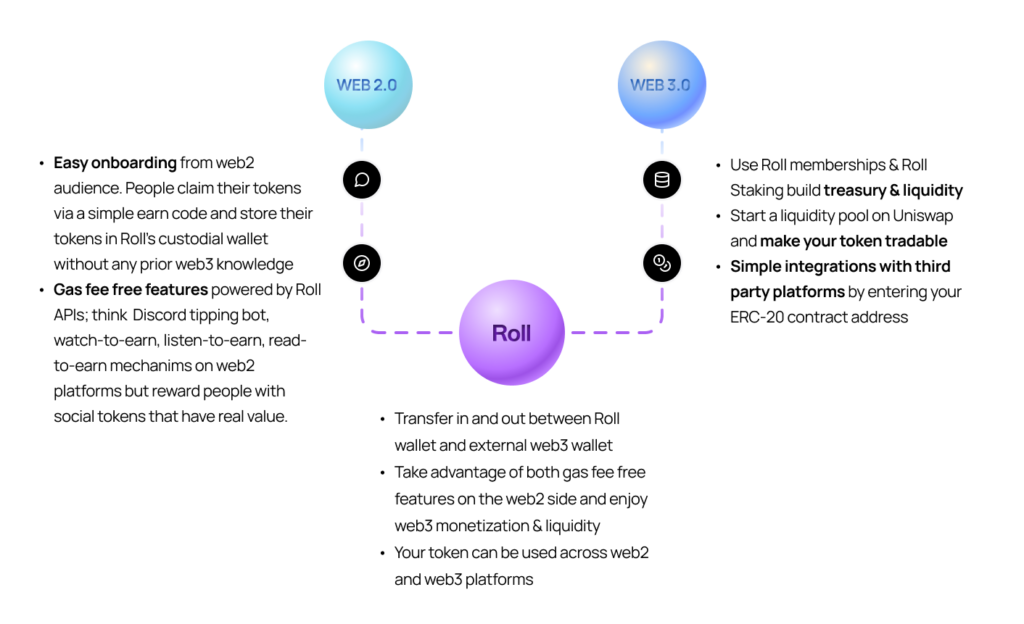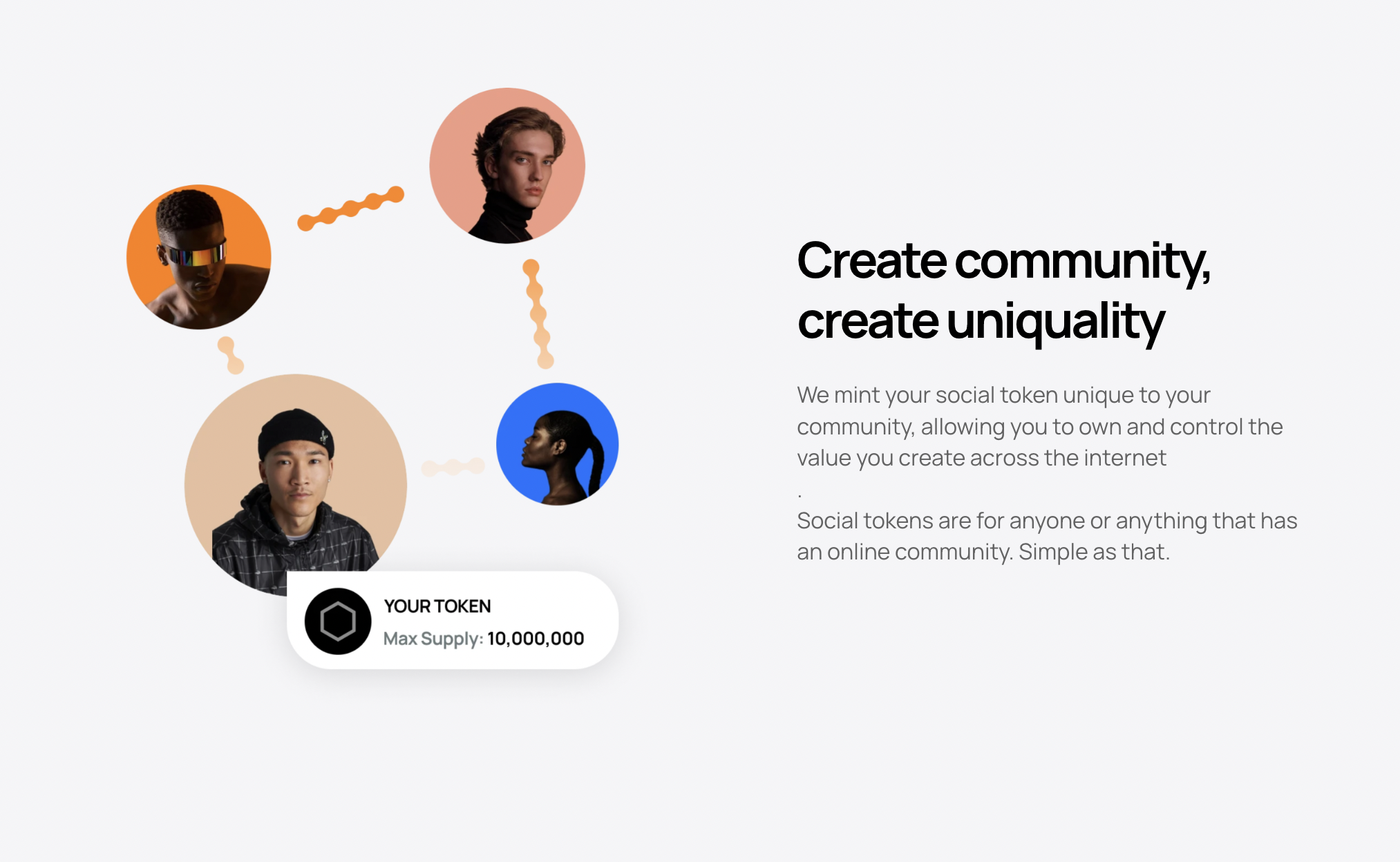The creators’ playbook has always evolved with technology. Right from the pre-internet era, when creators had to come up with content and pitch them to book publishers, record labels, TV studios, and record labels. Creators had to give up a large percentage of their future earnings and creative control to gain publicity for their work and get funding.
In the web2 era, it became a bit easier as the creators had more control over what to put out and how to distribute their work. Web2 playbook was with the internet era; creators can publish their work on social media platforms like Instagram and Tiktok and access their audience directly.
Web2 creators had to follow some steps before they could monetize their content. They created free content on the platforms to build their audience. After building a sizable audience, they can monetize their content through brand sponsorships, merchandise, subscriptions, and advertising.
Even though the creators had full ownership of their work, they had a long way to go before they could monetize their content. And often, creating the content takes a lot of time and effort, and the creator has no certainty of returns. So, as good as the web2 playbook is, it requires lots of resources which can be affected by financial constraints. Means of creation explained this “cold-start challenge” in their latest blog post – The New Creator Playbook: Jumpstarting Communities Through Tokens. Web3 is inverting the online creation model.
Now let’s look at the Web3 creator playbook. It turned the “cold-start challenge” around and made it easier for creators to fund their content creation without having a large audience. The creator could start with a small number of dedicated fans and build from there.
In the context of web3, the incentives between creators and fans are aligned through holding the same tokens. Due to tokens having inherent monetary value, it is now in the interest of both the creator and the token holders to actively raise the value of the memberships over time. Not only are token creators held accountable for providing great benefits and perks, community members are held accountable to champion and advocate for the community and co-create value together. On top of value driven incentives, instead of just consuming content, the token gated community can engage with each other and becomes a two sided + peer to peer experience that’s unique to each community.
A tokenized community is a great advantage to the creator because they can concentrate on creating content without being limited by a lack of resources and funding. The community members co-create alongside the creator so the community keeps growing. It is a win-win for everyone!
Benefits of a Tokenized Community
- Both parties do their part and earn their rewards. While the creator works to create and give value initially, the community members co-create with the creator in the community to raise the community value.
- It builds an actual community that engages and connects with each other
- Digital scarcity ensures better value delivery to the super fans.
- There’s no middlemen fees. You become your own independent platform that’s interoperable with other systems/communities on the blockchain
The Tokenized Community Flywheel
The tokenized community has three value forms that work together to make the community work. Forefront introduced this concept in its What Makes Tokenized Communities Valuable?
The flywheel starts from the production value when a group works together to develop ideas to pitch content or creation at a certain amount. People who love the content tap into it and form a community of fans and supporters; this is what creates the network value. The network value works together to create projects and bring more people to the community.
When these community members win their tokens and can decide on the content and things concerning the community, they have ownership value. Now, the owners are meant to use their influence to spread the content and ensure more people tap into it and become partners.
Community tokens accrue value based on how well token holders can coordinate and fund meaningful collaboration. In other words, successful communities accrue value based on how well they can incentivize people to do things together.
Playbook to Become a Successful Tokenized Community – the Roll Edition

From working with over 450 creators and communities, Roll has put together this step by step playbook to launch a successful tokenized community.
- Mint an ERC-20 token on Roll. 10 million fixed supply to signal digital scarcity and easy to manage throughout the token lifecycle
- Give some small amount of tokens to incentivize and onboard web2 audience into web3
- Define clear utility of the token and design an on-chain memberships with tiers and perks for each tier (think Patreon on-chain). Read more about Roll Memberships, from web2 to web3
- Launch a Memberships smart contract and educate your community on how to set up a metamask and how to claim their on-chain memberships.
- Build a Web3 homepage with a web3 no-code community building tool like Bonfire or Tellie token and set up gated pages for different tiers to unlock exclusive access. You can token gate events, content, streams, audio and video, you name it! Check out our research on Token gating platforms
- Market making on DEXes + liquidity providing
- Start a liquidity pool on Uniswap for your token to be tradable
- Use Roll Staking to incentivize liquidity providing by rewarding additional tokens to liquidity provider
- Use Roll APIs to create more use cases/utilities like tipping, contribute-to-earn, listen-to-earn, read-to-earn to strengthen community engagement without having to worry about gas fees.
- Keep providing value to your community
- Finally, you have a growing tokenized community with a tradable token that can be bought, sold, redeemed, used across the Internet, web2 and web3

